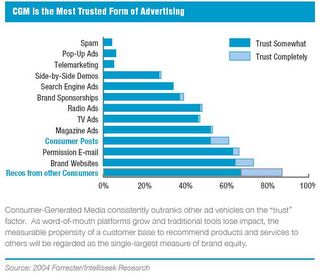Most people think of coupons as merely a discount that vendors offer consumers in order to increase their business. This perception misses the core value of coupons, which is the ability to use a special incentive to drive favorable consumer behavior.
Coupons are not merely a discount. In the heyday of the Internet bubble a company created a clean and technically savvy approach to couponing. They arranged with credit card clearinghouses to deduct a certain percentage of purchases from participating vendors. Then this Internet start-up sent email alerting these card holders that they would automatically get discounts at participating vendors. What behavior did this drive? None. The cardholders continued to shop at the same stores as before, and they would simply get a pleasant surprise that their bill was lowered through discounts at participating vendors.
In this case, the vendors offered an across the board discount to consumers, with no reinforcement that the consumers were even aware of the discount, or that it was modifying their behavior in any way. While this approach avoided the “messiness” of couponing for both the consumers and the vendors, it failed to modify behavior and was therefore a complete failure.
Now let me give you another example. Coffee shops have large fixed costs in terms of staffing, equipment and rent. They have very low variable costs attributable to coffee and cups. One local coffee shop found that they were extremely busy during the morning and evening hours, but the place was dead during the middle of the day. With a high fixed cost structure, any additional business during these slow times would go almost directly to the bottom line.
So the savvy coffee shop owner offered a coupon that deeply discounted coffee from 10am – 3pm. This offer caused traffic to increase during this time by 25%. In this case, the coupon achieved the objective of modifying consumer behavior in a manner that was very favorable for the business, without impacting the profitable business during their busy times.
Let me give you another example of the power of coupons. Amazon found that their average transaction was under $10. So they instituted “FREE Super Saver Shipping” for orders over a certain minimum. The actual threshold has been dropped from $99 to $49 to $25. When was the last time you went to Amazon to buy one book and were tempted to buy one or two more to get free shipping? They get me every time! This offer drives favorable consumer behavior. It increases the average order size from sub $10 to well over $25, and the incremental profit more than pays for the shipping. It also makes consumers feel good about shopping online since they don’t have to pay for shipping.
Amazon has recently taken this one step further by offering free shipping for a year for a flat $79. Once the consumer pre-pays their shipping, they are mentally locked into buying from Amazon for a year. Wouldn’t you feel silly paying for shipping from a competitor when you’ve pre-paid for Amazon? And when comparing prices, Amazon now has lower prices because you don’t have to pay shipping there. Frequent buyers might feel good about this bargain, but Amazon may be selling the sleeves from their vest, because of the broad use of free shipping on the Internet.
A coupon’s value, whether it involves a coupon code or a printed coupon, is whether it drives favorable consumer behavior that achieves the advertising company’s business objectives. Let me offer a quick list of business objectives and the offers that achieve them:
Grow your customer base by attracting new customers:
This is especially common with new businesses and those that have excess capacity.
• 15% Off of Your First Order
• Sign-up Now and Get 3 Months Free
• Free Introductory Lesson
Drive repeat business and increase customer loyalty:
• Your 5th Sandwich is Free
• Your Second Session is ½ Price
• Every 5th order is 50% off
Sell specific items or services:
This is used to introduce new products/services, increase sales of high-profit items, sell excess inventory, etc.
• 15% Off All Dive Computers
• 10% Off Our Gold Package
• 2004 Snowboards 70% Off (while they last)
• 50% Off Previously Viewed DVDs
• 15% Off Our New Line of Sports Wear
Increase business during slow times:
• 33% Off Midweek Rentals
• $.50 off any Coffee Drink Weekdays 10AM – 3PM
• $3 Off Haircuts Weekdays 10AM – 3PM
• Early Bird Special 15% Off All Entrees Before 5PM
Capitalize on seasonal or special events:
• Bare Root Fruit Trees $10
• Monday Night Football: $8 Large Pizza
• $1 Beers on Fight Night
• Prepare Your Pool for Summer $75
Increase your average transaction size:
This is very popular. Think “Meal deal” and “Supersize” at fast food restaurants. Maximizing revenue per customer is a proven winner!
• Free Delivery on Purchases Over $200
• Buy one Entrée, get the 2nd Entrée 50% Off
• Free Cup of Coffee with Purchase of a Bagel
• Take $50 Off Any Complete Ski Package
• $50 Off MS Office When Purchased With an HP PC
Simplify your business process with regular specials:
This is particularly relevant to restaurants because they can simplify their kitchen prep time by offering daily specials.
• Take $1 Off Our Daily Lunch Specials
• Daily Dinner Special Only $8.99
Capitalize on customer traffic from nearby events:
• Rockets Pre-Game Special $2 Beers
• Show Your Movie Ticket Get $1 Single Scoop
• Giants Lunch Box Special $4.99
Generate customer referrals:
A great way to grow your business is through customer referrals. And a great way to stimulate customer referrals is through coupons.
• Bring a friend and get 25% off your order (one discount per pair)
• Refer a friend and get a 15% rebate
• 1 month free when you refer a friend
I could go on and on with coupon offers that drive favorable consumer behavior. Best of all, consumers that receive these special deals feel special. Using coupons makes people feel like smart consumers. It also creates an appreciation for the business that is offering the discount, because they really want you to try their business. And people love telling their friends about bargains, so coupons can fuel positive word of mouth: “We had a wonderful meal at Mike’s Bistro on Harbor, and we saved $20 on the tab, you really should try it!”
Coupons also offer businesses a unique advantage over every other form of advertising. Shopkeeper John Wanamaker was famously quoted saying: “Half the money I spend on advertising is wasted; the trouble is I don't know which half.” With coupons, redemption makes it very clear what works and what doesn’t. No other form of advertising provides this level of transparency and accountability.
Obviously, coupons can be much more than a simple discount. When done properly, coupons are a powerful tool in any business’ marketing arsenal. One of the more popular uses of coupons is to introduce consumers to the company. It is important to note that coupons can be used to create customers, but it is up to the business to turn those customers into fans.





